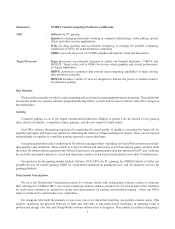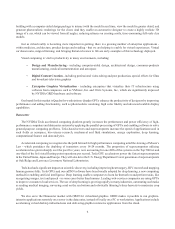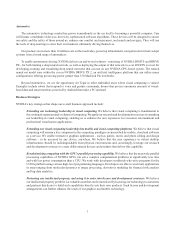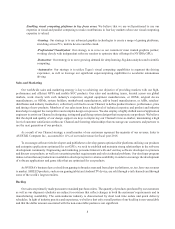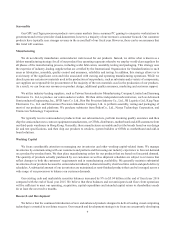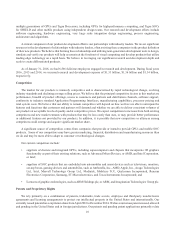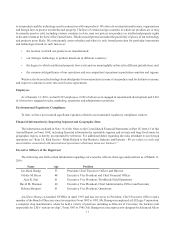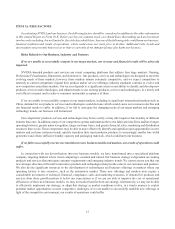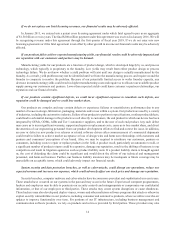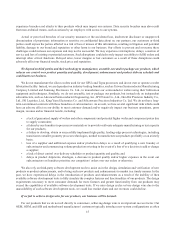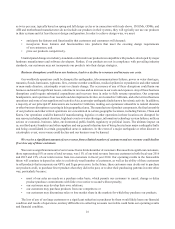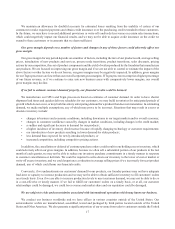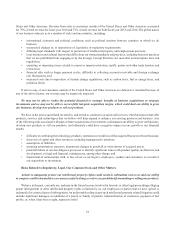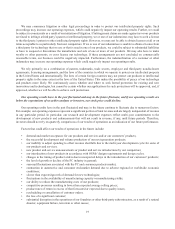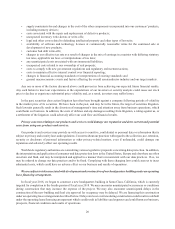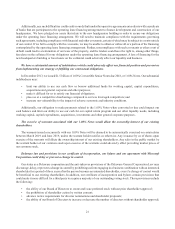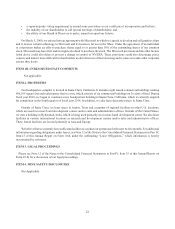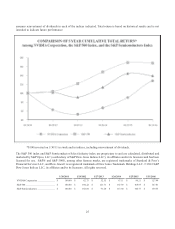NVIDIA 2016 Annual Report Download - page 161
Download and view the complete annual report
Please find page 161 of the 2016 NVIDIA annual report below. You can navigate through the pages in the report by either clicking on the pages listed below, or by using the keyword search tool below to find specific information within the annual report.15
experience breaches and attacks to their products which may impact our systems. Data security breaches may also result
from non-technical means, such as actions by an employee with access to our systems.
Actual or perceived breaches of our security measures or the accidental loss, inadvertent disclosure or unapproved
dissemination of proprietary information or sensitive or confidential data about us, our partners, our customers or third
parties could expose the parties affected to a risk of loss or misuse of this information, resulting in litigation and potential
liability, damage to our brand and reputation or other harm to our business. Our efforts to prevent and overcome these
challenges could increase our expenses and may not be successful. We may experience interruptions, delays, cessation of
service and loss of existing or potential customers. Such disruptions could adversely impact our ability to fulfill orders and
interrupt other critical functions. Delayed sales, lower margins or lost customers as a result of these disruptions could
adversely affect our financial results, stock price and reputation.
We depend on third parties and their technology to manufacture, assemble, test and/or package our products, which
reduces our control over product quantity and quality, development, enhancement and product delivery schedule and
could harm our business.
We do not manufacture the silicon wafers used for our GPUs and Tegra processors and do not own or operate a wafer
fabrication facility. Instead, we are dependent on industry-leading foundries, such as Taiwan Semiconductor Manufacturing
Company Limited and Samsung Electronics Co. Ltd., to manufacture our semiconductor wafers using their fabrication
equipment and techniques. Similarly, we do not assemble, test or package our products, but instead rely on independent
subcontractors, such as Advanced Semiconductor Engineering, Inc., BYD Auto Co., Ltd., Hon Hai Precision Industry Co.,
Ltd., JSI Logistics, Ltd., King Yuan Electronics Co. and Siliconware Precision Industries Co. Ltd. We do not have long-
term commitment contracts with these foundries or subcontractors. As a result, we face several significant risks which could
have an adverse effect on our ability to meet customer demand and/or negatively impact our business operations, gross
margin, revenue and/or financial results, including:
• a lack of guaranteed supply of wafers and other components and potential higher wafer and component prices due
to supply constraints;
• a failure by our foundries to procure raw materials or to provide or allocate adequate manufacturing or test capacity
for our products;
• a failure to develop, obtain or successfully implement high quality, leading-edge process technologies, including
transitions to smaller geometry process technologies, needed to manufacture our products profitably or on a timely
basis;
• loss of a supplier and additional expense and/or production delays as a result of qualifying a new foundry or
subcontractor and commencing volume production or testing in the event of a loss of or a decision to add or change
a supplier;
• a lack of direct control over delivery schedules or product quantity and quality; and
• delays in product shipments, shortages, a decrease in product quality and/or higher expenses in the event our
subcontractors or foundries prioritize our competitors’ orders over our orders or otherwise.
We also rely on third-party software development tools to assist us in the design, simulation and verification of new
products or product enhancements, and to bring such new products and enhancements to market in a timely manner. In the
past, we have experienced delays in the introduction of products and enhancements as a result of the inability of then
available software development tools to fully simulate the complex features and functionalities of our products. The design
requirements necessary to meet consumer demands for more features and greater functionality from our products may
exceed the capabilities of available software development tools. If we miss design cycles or lose design wins due to the
unavailability of such software development tools, we could lose market share and our revenues could decline.
If we fail to achieve design wins for our products, our business will be harmed.
For our products that we do not sell directly to consumers, achieving design wins is an important success factor. Our
OEM, ODM, and AIB and motherboard manufacturers' customers typically introduce new system configurations as often


